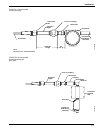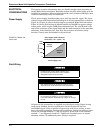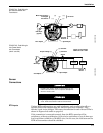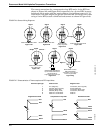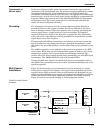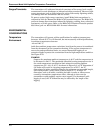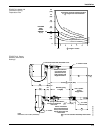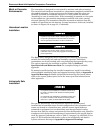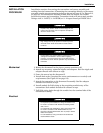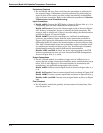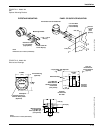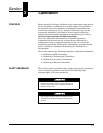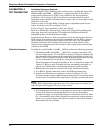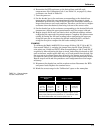
Rosemount Model 444 Alphaline Temperature Transmitters
2-10
Moist or Corrosive
Environments
The transmitter is designed to resist attack by moisture and other corrosives.
The coated circuit boards are mounted in a compartment completely sealed from
the conduit entrances. O-ring seals protect the interior when the covers are
installed. In humid environments, however, it is still possible for moisture
“breathing” to occur in conduit lines. If the transmitter is mounted at a low point
in the conduit run, the terminal compartment could fill with water, causing
electrical shorting. The transmitter should be mounted so moisture from the
conduit will not drain into the housing. In some instances a drain seal, installed
as shown in Figure 2-2 on page 2-3, is advisable.
Hazardous Location
Installation
The Model 444 is designed with an explosion-proof housing and circuitry
suitable for intrinsically safe and non-incendive operation. Individual
transmitters are clearly marked with a tag indicating the approvals they carry.
The various approvals are available as options. Refer to Section 5
Specifications and Reference Data for a complete listing of available
approvals.
To maintain certified ratings for installed transmitters, install in accordance
with applicable installation codes and approval drawings. Refer to Appendix A
Approval Drawings for Model 444 installation drawings. For future orders,
refer to the current product price list for the most up-to-date information on
these approvals.
Intrinsically Safe
Installation
You can use Intrinsically safe installations instead of explosion-proof
installations in hazardous areas. In such configurations, the transmitter and
sensor are located in a hazardous area, and the current signal leads are
connected to equipment in a non-hazardous area through intrinsic safety
barriers that limit the voltage and current fed into the hazardous area. Install in
accordance with the barrier manufacturer’s instructions for the specific barrier
used. For approval information, refer to Table 5-1 on page 5-4, and Table 5-2 on
page 5-5. For installation information, refer to the intrinsically safe barrier
systems reference drawings in Appendix A Approval Drawings.
Explosions may result in death or serious injury. Verify that
the operating atmosphere of the transmitter is consistent
with the appropriate hazardous locations certifications.
Explosions may result in death or serious injury. Both
transmitter covers must be fully engaged to meet explosion-
proof requirements.
For explosion-proof installations, installation location must
be made in accordance with Rosemount drawing 00444-
0261, Rev. E.
For intrinsically safe installations, installation location must
be made in accordance with Rosemount drawing 00444-
0034, Rev. C (CSA) or 00444-0264, Rev. B (SAA).




